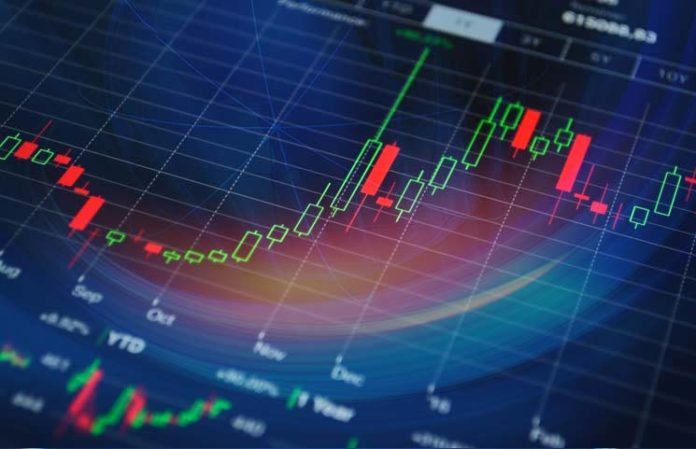How to Read Crypto Charts
5 min readAlong with the news, a price chart is most certainly amongst the top tools that any crypto technical trader will use to conduct analysis on the prices of Bitcoin or Ethereum during their trading day. Charts provide a representation of the sentiment at the current moment for cryptocurrencies and many traders would be totally lost without them today.

The change in prices over time can be represented in a number of different ways but traders have developed different tools over the years to create the pricing charts that we have today for trading.
The two main ELEMENTS and tools of any crypto chart are PRICE (usually USD) and TIME. Along the vertical axis is the price and along the horizontal axis is time.
There are four main characteristics of the price that can be represented and shown as news upon a chart, these are;
- Period Open – the cost at the beginning of the trade period (weekly, daily, 4hours, 15min period etc.)
- Period Close – the cost at the end of the period
- Period High – The highest cost experienced during the period
- Period Low – The lowest cost experienced during the period
These four characteristics are the typical data points that are used to print on the charts to create the trends in the market that we see today and are used for trading.
Types of crypto charts
Although it seems that there is a limited number of variations to representing cost against time, there are still a fair few numbers of different types of tools available for crypto traders to do analysis. These include tools such as point & figure chart, bar chart, a tick chart, a volume chart, and a range bar chart. There are also a charts to see a visual representation of a coins market cap.
An example of a chart that you may be familiar with is known as the line chart. This simply plots its points from the closing cost of the previous period to the next closing period. It looks like this;
You can see that the price of the coin is represented by one long line that moves up and down.
Although this is a very easy method for understanding coin movements, a line chart may be very limited compared to others when used in the trading analysis. For example, the line chart only uses the closing price data to create a chart. It leaves out the opening, high, and low prices.
The most popular type of chart that you might have come across in the cryptocurrency world is known as a Candlestick chart. A candlestick chart will always include all the characteristics of price and may provide more data for traders to analyze cryptocurrencies. The volume of the range is usually always printed at the bottom of any candlestick chart.
It consists of a real body with wicks (or shadows) on either side of the real body. It looks like this;
Let me zoom in closer to some candles so you may have a closer look at them;
The real body (the bar) of the candlestick shows the difference in the price between the open and close of the period. The period is the length of time that each candlestick takes to form and is selected by the trader. The length can range from 1-minute candles to 1-month candles. On the example above, the daily chart has been selected so this means that each candle represents 1 day of trading action.
The actual length of the body of the candle indicates the buying/selling pressure within the coin during that period. This means that a long green body would indicate strong buying pressure and a small green body would indicate weak buying pressure.
The wicks of the candles are prices that the coin reached before that particular candle closed and it represents the total trading range of the coin during each period.
Using candlesticks to identify trends
Trends are what traders use to identify the direction of any particular coin in order to make a trade and bank some profit. Remember, a trader really only makes money if the coin is trending so it is important for the trader to identify these trends in order to get into them early enough to maximize gains.
The majority of people think that markets will only move up or down. However, they forget that there is actually a third type of market trading condition that could be in play which is known as consolidation.
The three types of trends are;
- Uptrend – Also known as a bullish market where prices are rising and creating “higher highs” and “higher lows”.
- Downtrend – Also known as a bearish market where prices are falling and creating “lower highs” and “lower lows”
- Sideways movement – A period that is also known as consolidation where the coin is ranging.
To identify these types of trends, traders use trend lines in order to identify the direction. A trend line is simply a line drawn in the direction of a particular coin. They are usually used to time entry and exits within markets and are used to provide additional confirmation of the trend direction.
In addition to all of this, the slope of a trend line can actually be used to identify the momentum and the strength of any particular trend. Usually, the longer the trend line, the strong the trend.
There are two types of trend lines that are known as support trend lines and resistance trend lines.
The following chart is an example of a support trend line in Bitcoin;
We can see that bitcoin remained above the trend line for over 2 months. Each time bitcoin approached the trend line it provided a strong buying opportunity for any trader that was available to scratch it.
The following chart is an example of a resistance trend line for Bitcoin;
We can see that Bitcoin remained beneath this trend line for a very long period of time (over 6 months!). This allowed traders to enter the coin any time it touched the falling trend line.
Conclusion
A crypto chart is a very versatile tool that helps crypto traders gauge the direction of the coin and make trades. It provides a visual representation of prices for Bitcoin against time to allow traders to conduct analysis on potential future movements in the coin.
Trend lines are used to help traders identify which type of trend the current coin is trading within and can be used to time entry and exit points.
There are a host of different charts available today for a trader including, but not limited to, a line chart, a bar chart, a point and figure chart, a range bar chart, and a candlestick chart. However, we will cover three of them and mainly use only one of them.
You can also like: What will help Bitcoin and the issue of privacy on the right way to success?





